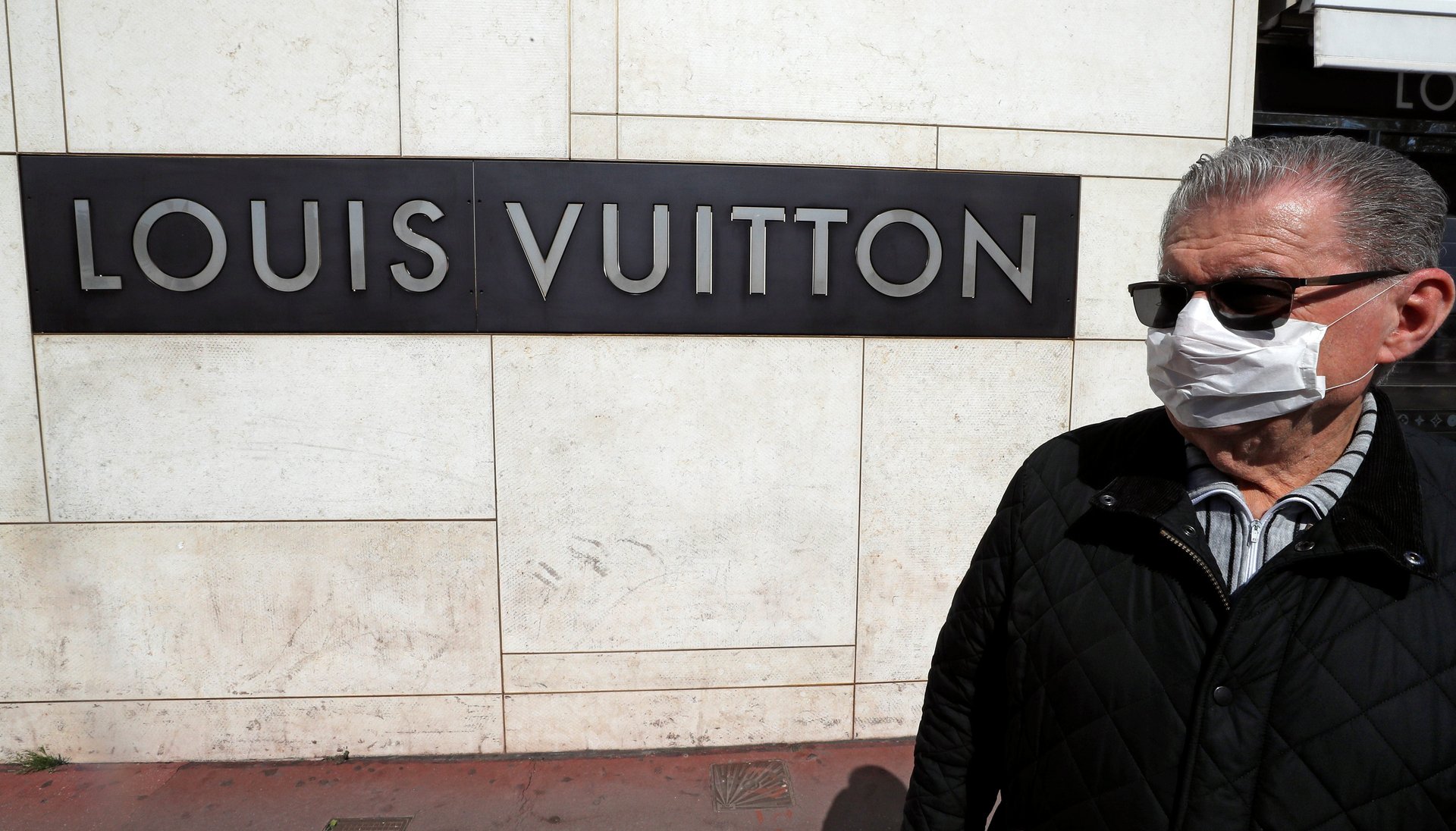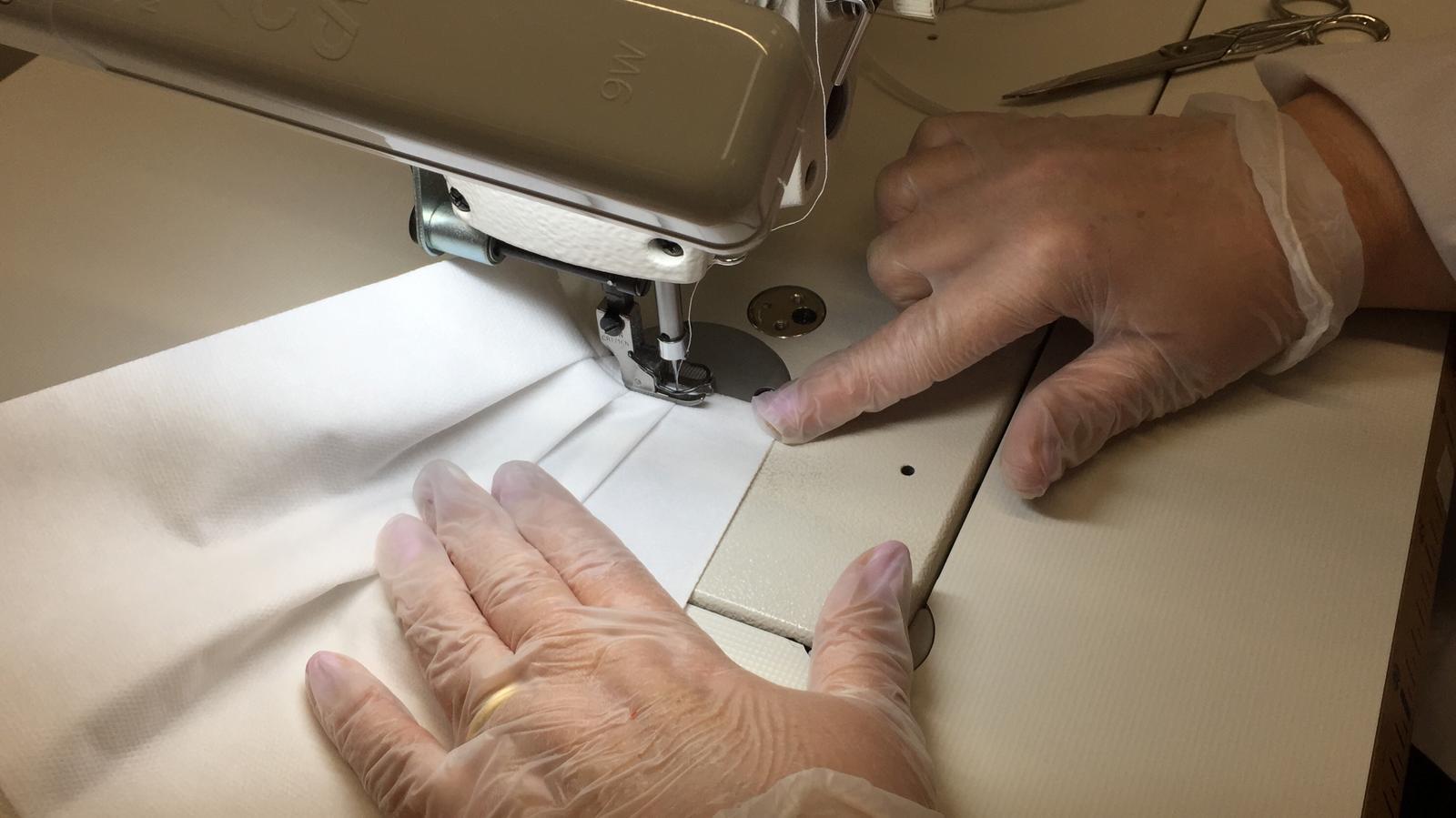For fashion companies making medical masks, sewing them is the easy part
Fashion companies from H&M and Zara to luxury firms LVMH, Kering, and Prada are contributing to the fight against Covid-19 by pledging to supply protective items for medical workers.


Fashion companies from H&M and Zara to luxury firms LVMH, Kering, and Prada are contributing to the fight against Covid-19 by pledging to supply protective items for medical workers.
Many are offering to pitch in with their production facilities and make masks, which are in short supply. The tough part, however, isn’t necessarily sewing them. It may be getting the materials to make them in the first place.
Not all masks are equal
Medical-grade masks are made from specialized textiles. The variety favored in places such as hospitals (pdf) today isn’t woven like a typical fabric. It’s made by complex and expensive machines that form melted, synthetic fibers into an extremely fine web. This web allows air to pass through while filtering out particles, which is why this non-woven material is used in respirators such as those labeled N95 in the US or FFP2 in Europe (pdf). The labels refer to the certification processes the respirators undergo. N95 respirators, which are designed to fit so they form a seal around the nose and mouth, can block at least 95% of particles as small as 0.3 microns under testing.
Surgical masks are also made from these fabrics, but they fit loosely on the face so they don’t offer as effective a filter. Still, they can keep medical workers from infecting others if they’re sick themselves and can catch some particles.
The surge in demand for these medical-grade textiles, however, has left their manufacturers struggling to keep up. Fashion companies, meanwhile, don’t generally have established suppliers for these materials, and the regular cloth they do have easy access to may not be much help to healthcare workers.
There is some evidence a cloth mask is still better than no mask at all—but just barely. The World Health Organization recommends against (pdf) using cloth masks, such as cotton or gauze, “under any circumstance.”
One 2015 study of about 1,600 hospital workers in Vietnam also discouraged the use of cloth masks, finding almost 97% of particles passed through them. The lead author said in a release at the time that cloth masks “should not be used by workers in any healthcare setting,” especially high-risk situations, and believed cloth masks could even raise the risk of infection, in part by retaining moisture.
How fashion companies are responding
Instead of making masks, some fashion companies have bypassed the problem by buying finished masks directly from China, which makes most of the world’s medical masks. LVMH, owner of brands such as Louis Vuitton and Dior, said on March 21 it had managed to order 10 million masks from a Chinese industrial supplier, including 7 million surgical masks and 3 million FFP2 masks. It plans to repeat the order in similar quantities weekly for at least four weeks. Kering, owner of Gucci and other labels, is purchasing a total of 3 million masks from China to give to France’s health service.
But companies looking to make masks themselves have to find the right textiles first. A spokesperson for Prada said in an emailed statement that officials for the region of Tuscany helped it find the raw material suppliers for the 110,000 masks and 80,000 medical overalls it’s making at its factory in Perugia. The masks will be surgical masks made from a nonwoven fabric.

Kering says its luxury houses Gucci, Balenciaga, and Yves Saint Laurent will begin making masks at their workshops as soon as the relevant authorities in Italy and France approve their manufacturing processes and materials. The company said it couldn’t offer any further detail at the moment.
A spokesperson for H&M said in an email that the company is working with the EU to determine which products are needed most urgently, but if it begins producing masks it will use both external suppliers already producing masks and its regular suppliers. “Irrespective of which supplier we use, we are of course following the quality standards and requirements set up by WHO and the EU,” the spokesperson said.
Zara, meanwhile, has said it’s working with its manufacturing experts to see if it can switch some of its textile manufacturing over to making “health materials.”
Some smaller companies in the US are going ahead and making cloth masks. Designer Christian Siriano told the New York Times he intends to make masks that meet the standards of the US Food and Drug Administration as soon as he’s able to receive the materials and patterns. In the meantime, he has had seamstresses producing prototype masks from a poly-lycra-cotton blend from the company’s stockroom. The Times said the company is testing them “according to regulations from the [New York] governor’s office.”
It’s unclear if those regulations allow for cloth masks and if they will be distributed to New York healthcare workers. Quartz has reached out to the New York governor’s office and to Christian Siriano and will update this story with any reply.
Los Angeles Apparel, another company the Times spoke with, said it was making masks from a “sweatshirt-like” fabric.
Companies don’t just need to find the right materials either. They may need to ensure their production sites comply with regulations on cleanliness to keep products sterile. Recently, when Shanghai General Motors started making masks, it used a clean room it normally keeps for research and development, a manufacturing expert at the World Economic Forum recently explained to Quartz. Fashion companies might have to sanitize their facilities and have authorities sign off, creating yet another step before they can get to work.